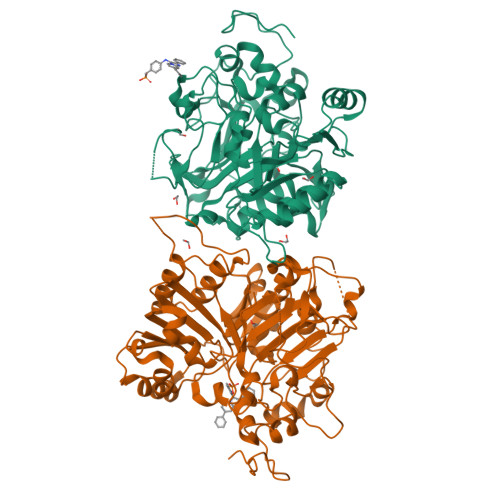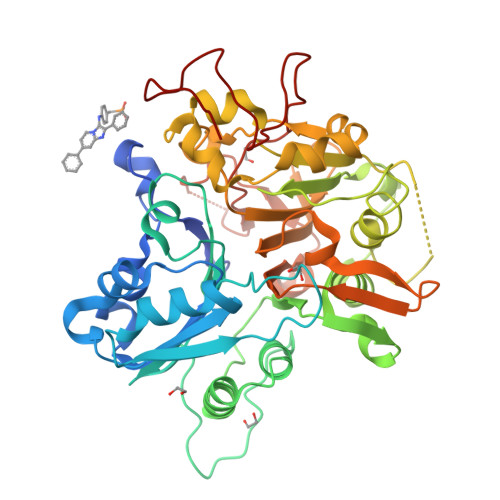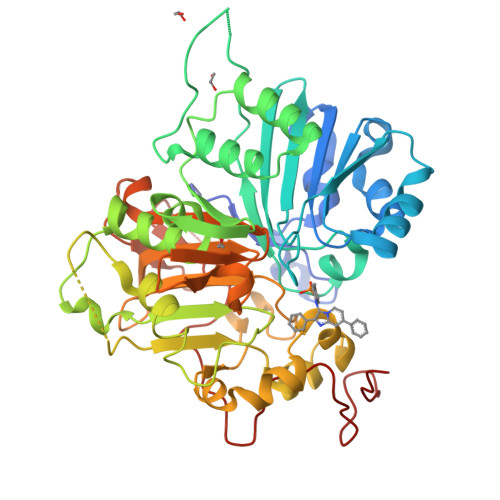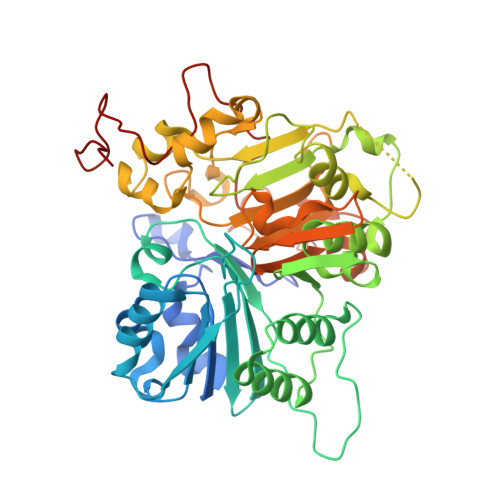Phosphonic acid-containing inhibitors of tyrosyl-DNA phosphodiesterase 1.
Zhao, X.Z., Wang, W., Lountos, G.T., Tropea, J.E., Needle, D., Pommier, Y., Burke Jr., T.R.(2022) Front Chem 10: 910953-910953
- PubMed: 36051621
- DOI: https://doi.org/10.3389/fchem.2022.910953
- Primary Citation of Related Structures:
7UFY, 7UFZ - PubMed Abstract:
Tyrosyl-DNA phosphodiesterase 1 (TDP1) repairs stalled type I topoisomerase (TOP1)-DNA complexes by hydrolyzing the phosphodiester bond between the TOP1 Y723 residue and the 3'-phosphate of its DNA substrate. Although TDP1 antagonists could potentially reduce the dose of TOP1 inhibitors needed to achieve effective anticancer effects, the development of validated TDP1 inhibitors has proven to be challenging. This may, in part, be due to the open and extended nature of the TOP1 substrate binding region. We have previously reported imidazopyrazines and imidazopyridines that can inhibit TDP1 catalytic function in vitro . We solved the TDP1 crystal structures with bound inhibitors of this class and found that the dicarboxylic acid functionality within the N -(3,4-dicarboxyphenyl)-2-diphenylimidazo [ 1,2-a ]pyridin-3-amine platform overlaps with aspects of phosphoryl substrate recognition. Yet phosphonic acids could potentially better-replicate cognate TOP1-DNA substrate binding interactions than carboxylic acids. As reported herein, we designed phosphonic acid-containing variants of our previously reported carboxylic acid-containing imidazopyrazine and imidazopyridine inhibitors and effected their synthesis using one-pot Groebke-Blackburn-Bienayme multicomponent reactions. We obtained crystal structures of TDP1 complexed with a subset of inhibitors. We discuss binding interactions of these inhibitors within the context of phosphate-containing substrate and carboxylic acid-based inhibitors. These compounds represent a new structural class of small molecule ligands that mimic aspects of the 3'-processed substrate that results from TDP1 catalysis.
Organizational Affiliation:
Chemical Biology Laboratory, Center for Cancer Research, National Cancer Institute, National Institutes of Health, Frederick, MD, United States.





















